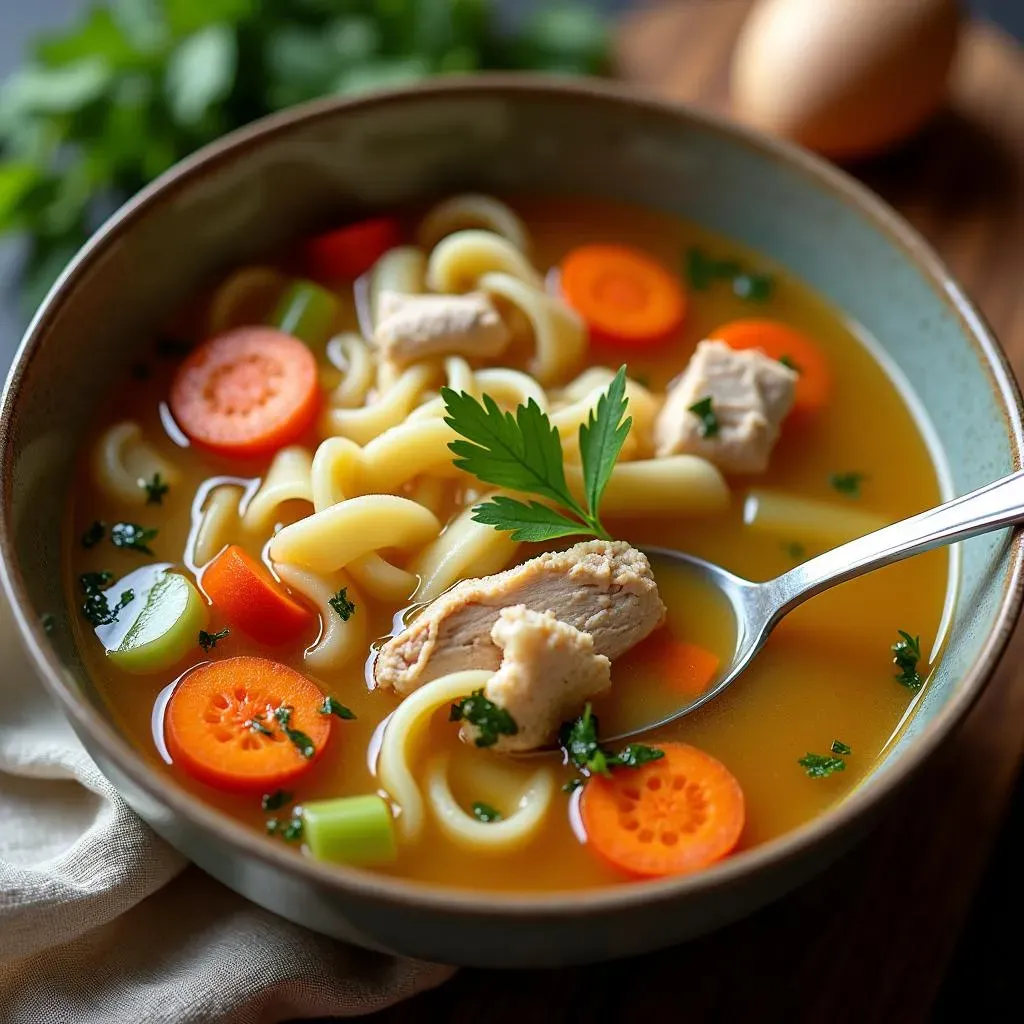Table of Contents
Is there anything more comforting than a warm bowl of chicken noodle soup? It’s the go-to remedy for sniffles, a hug in a bowl on a chilly day, and a classic dish loved by generations. But let’s face it, traditional recipes can be sodium bombs. If you're watching your salt intake, whether for health reasons or simply a preference for less sodium, you might think you have to ditch this beloved soup altogether. Not so fast! This article is your guide to creating a delicious and satisfying chicken noodle soup recipe low sodium that doesn’t sacrifice flavor. We'll dive into how to build incredible taste without relying on excessive salt, exploring key ingredients and cooking techniques that will transform your soup game. From selecting the right vegetables to mastering the art of herb infusions, get ready to discover how to make a healthy and flavorful low sodium chicken noodle soup. Plus, we'll share some fun variations to keep things interesting. So grab your pot, and let's get cooking!
Why You Need a Low Sodium Chicken Noodle Soup Recipe
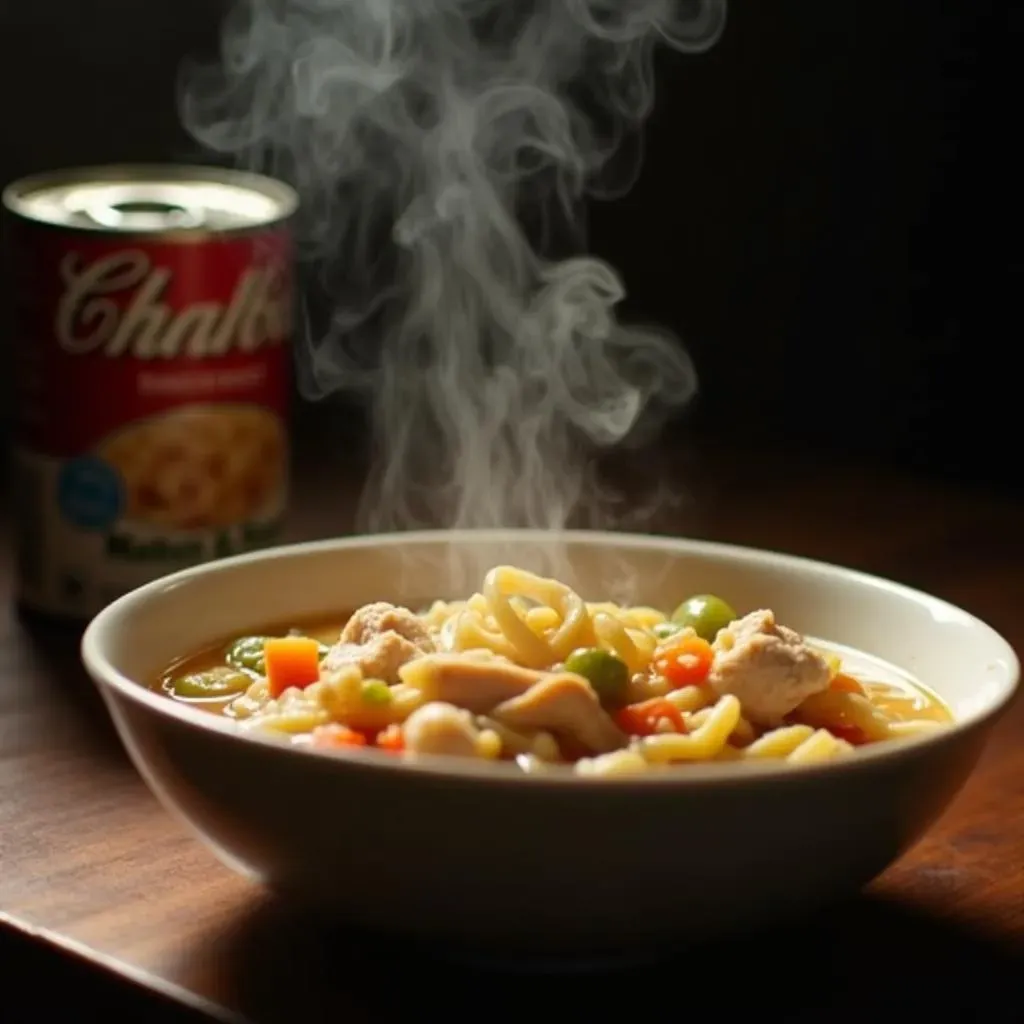
Why You Need a Low Sodium Chicken Noodle Soup Recipe
The Sodium Problem with Store-Bought Soups
Let's be honest, that can of chicken noodle soup on the grocery store shelf is tempting. It's convenient, affordable, and promises a quick fix when you're feeling under the weather. But peek at the nutrition label, and you might be shocked by the sodium content. Many commercially prepared soups are loaded with sodium, often exceeding the recommended daily intake in just one serving! This is a major concern, especially for individuals managing high blood pressure, heart conditions, or simply trying to maintain a healthier lifestyle. It's like you are trying to do something good for yourself, but end up accidentally sabotaging your own health.
Think about it: sodium is used as a preservative, a flavor enhancer, and a general "boost" to make the soup more palatable. However, the excessive amounts can lead to water retention, increased blood pressure, and a higher risk of cardiovascular problems. So, while that can of soup might seem like a simple solution, it could be contributing to long-term health issues. The good news? You can enjoy all the comforting goodness of chicken noodle soup without the sodium overload.
Here's a quick comparison to illustrate the point:
Soup Type | Sodium per Serving (approximate) |
|---|---|
Canned Chicken Noodle Soup | 700-900mg |
Homemade Low Sodium Chicken Noodle Soup | 150-300mg |
Health Benefits of Reducing Sodium Intake
Beyond just avoiding the pitfalls of excessive sodium, actively reducing your sodium intake offers a wealth of health benefits. Lowering your sodium consumption can significantly reduce your risk of developing high blood pressure, a leading cause of heart disease and stroke. It also helps your kidneys function more efficiently, reducing the strain on these vital organs. When you cut back on sodium, you might also notice a decrease in bloating and water retention, leaving you feeling lighter and more energetic. For some people, that puffy feeling goes away, and they realize that their joints feel better too.
Making your own low sodium chicken noodle soup is a proactive step towards a healthier you. By controlling the ingredients, you can ensure that you're nourishing your body with wholesome, nutrient-rich foods without the unnecessary sodium baggage. It's about taking charge of your health and making informed choices that support your well-being. Plus, cooking at home allows you to tailor the flavors to your liking, creating a soup that not only benefits your body but also delights your taste buds.
Building Flavor Without the Salt: Key Ingredients for Low Sodium Chicken Noodle Soup
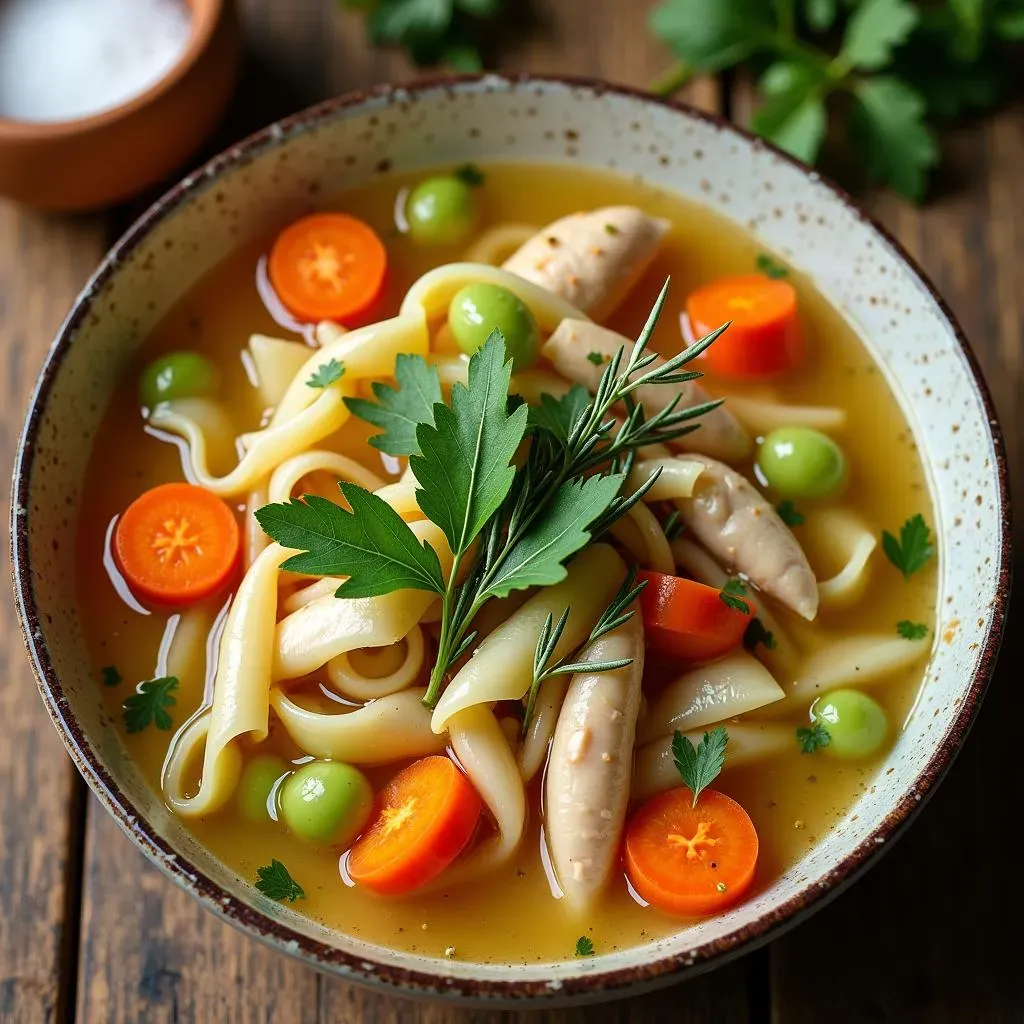
Building Flavor Without the Salt: Key Ingredients for Low Sodium Chicken Noodle Soup
The Power of Fresh Herbs
Forget relying on salt for that flavor punch! Fresh herbs are your secret weapon in creating a vibrant and aromatic low sodium chicken noodle soup. Think beyond just a sprinkle of dried parsley. We're talking generous handfuls of fresh thyme, rosemary, oregano, and bay leaves. These herbs release their essential oils as they simmer in the broth, infusing the entire soup with layers of complex and delicious flavors. Don't be shy – the more, the merrier! Experiment with different combinations to find your perfect blend. I personally love the combination of thyme and rosemary, its so warm and inviting. But don't be afraid to try something like basil and oregano for a brighter, more Mediterranean feel. You will be surprised what these herbs will add.
To maximize their flavor, add heartier herbs like rosemary and thyme early in the cooking process, giving them ample time to release their goodness. More delicate herbs like parsley, basil, and chives are best added towards the end, preserving their fresh, bright notes. You can even create a "herb bouquet" by tying the herbs together with kitchen twine for easy removal after simmering. This prevents stray leaves from floating around in your soup. Also, consider growing your own herbs. Fresh herbs are so much better.
Vegetable Depth: Building a Flavorful Base
A deeply flavorful broth is the foundation of any great soup, and vegetables are key to achieving that depth, especially when you're cutting back on sodium. Don't just toss in a few limp carrots and celery stalks! Instead, focus on creating a robust mirepoix – a classic combination of onions, carrots, and celery – and sauté them until they're softened and slightly caramelized. This process brings out their natural sweetness and adds a rich, savory note to the soup. Other vegetables like mushrooms, leeks, and parsnips can also contribute unique flavors and textures.
Roasting some of the vegetables before adding them to the soup can further enhance their flavor. Roasting intensifies their sweetness and adds a smoky depth that complements the other ingredients beautifully. Think about roasting your carrots, onions, and garlic before adding them to the pot. You won't believe the difference it makes! Also, don't discard your vegetable scraps! Save onion skins, carrot tops, and celery ends to make a flavorful vegetable broth. Just simmer them in water for an hour or so, strain, and use as the base for your soup.
Vegetable | Flavor Contribution |
|---|---|
Onions | Sweetness, savory depth |
Carrots | Sweetness, earthy notes |
Celery | Aromatic, subtle bitterness |
Mushrooms | Umami, earthy richness |
Leeks | Mild onion flavor, creamy texture |
Umami Boosters: Natural Flavor Enhancers
Umami, often described as the fifth taste (after sweet, sour, salty, and bitter), is that savory, meaty deliciousness that makes food incredibly satisfying. When you're reducing sodium, tapping into umami-rich ingredients is crucial for adding depth and complexity to your chicken noodle soup. Ingredients like dried mushrooms (such as shiitake or porcini), seaweed (like kombu), and tomatoes (especially sun-dried) are packed with natural glutamates, compounds that trigger the umami receptors on your tongue. Adding a small amount of these ingredients can significantly boost the overall flavor of your soup without adding any salt.
Consider adding a parmesan cheese rind to the soup as it simmers. The rind will infuse the broth with a subtle, nutty, umami flavor. Just be sure to remove it before serving! A splash of soy sauce can also add umami, but be mindful of the sodium content. Opt for low-sodium soy sauce or tamari for a healthier option. You can also add a small amount of miso paste to the soup. Miso is a fermented soybean paste that's packed with umami and adds a savory, slightly funky note to the broth. Remember that a little goes a long way!
StepbyStep: Cooking Your Delicious Low Sodium Chicken Noodle Soup
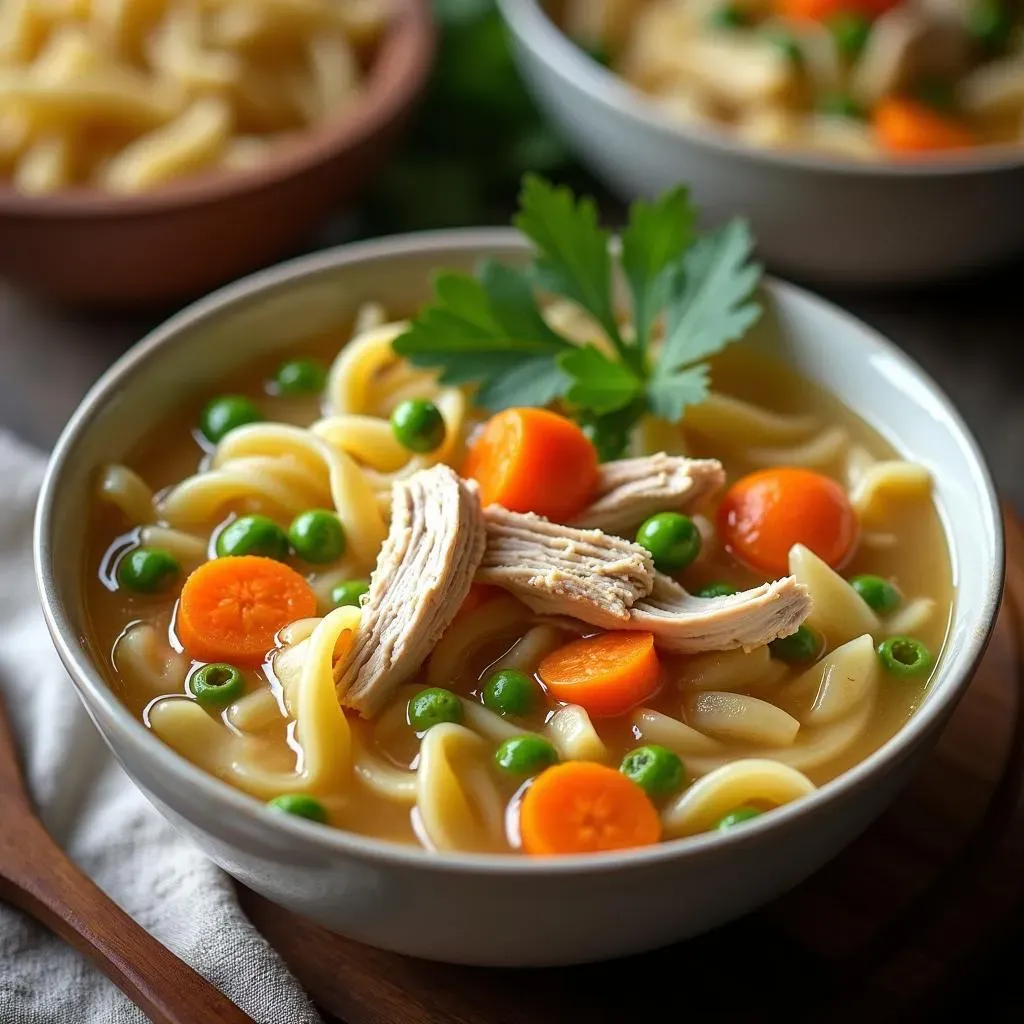
StepbyStep: Cooking Your Delicious Low Sodium Chicken Noodle Soup
Crafting the Broth: The Heart of the Soup
Alright, let's get down to business! The first step in creating a truly exceptional low sodium chicken noodle soup is building a flavorful broth. This is where the magic happens, and it all starts with quality ingredients. Grab about 2-3 pounds of bone-in, skin-on chicken pieces. I like to use a mix of drumsticks and thighs for the best flavor. Toss them into a large pot or Dutch oven, and cover with about 8-10 cups of cold water. Add your mirepoix – that's roughly 1 diced onion, 2 diced carrots, and 2 diced celery stalks – along with a generous handful of fresh herbs like thyme, rosemary, and a couple of bay leaves. Don't skimp on the herbs! They're your flavor powerhouses.
Bring the mixture to a gentle simmer over medium heat. Once it starts simmering, reduce the heat to low, and let it cook for at least 1.5 to 2 hours. The longer it simmers, the richer and more flavorful the broth will become. As it simmers, skim off any foam or impurities that rise to the surface. This will help ensure a clear and clean-tasting broth. Once the chicken is cooked through and falling off the bone, remove it from the pot and set it aside to cool slightly. Strain the broth through a fine-mesh sieve, discarding the vegetables and herbs. You've now got liquid gold!
Putting it All Together: Noodles, Chicken, and Veggies
Now that you have your amazing broth, it's time to assemble the final masterpiece! Shred the cooked chicken, discarding the skin and bones. Return the strained broth to the pot, and bring it back to a simmer. Add your favorite noodles. Egg noodles are classic, but you can also use gluten-free noodles, or even small pasta shapes like ditalini or orzo. Cook the noodles according to package directions, usually around 8-10 minutes, or until they're tender but still slightly firm.
Once the noodles are cooked, add the shredded chicken and any additional vegetables you like. I often add some frozen peas or green beans for extra color and nutrients. Simmer for another 5-10 minutes, until everything is heated through. Taste the soup, and adjust seasonings as needed. Remember, we're keeping the sodium low, so don't reach for the salt shaker! Instead, add a squeeze of lemon juice or a splash of apple cider vinegar to brighten the flavors. Garnish with fresh parsley or chives before serving, and enjoy your delicious and healthy low sodium chicken noodle soup!
Ingredient | Timing | Purpose |
|---|---|---|
Noodles | After broth is ready | Adds substance and texture |
Shredded Chicken | After noodles are cooked | Adds protein and flavor |
Additional Vegetables | With the chicken | Adds nutrients and color |
Lemon Juice/Vinegar | At the end | Brightens flavors |
Tips & Tricks for the Best Tasting Low Sodium Chicken Noodle Soup
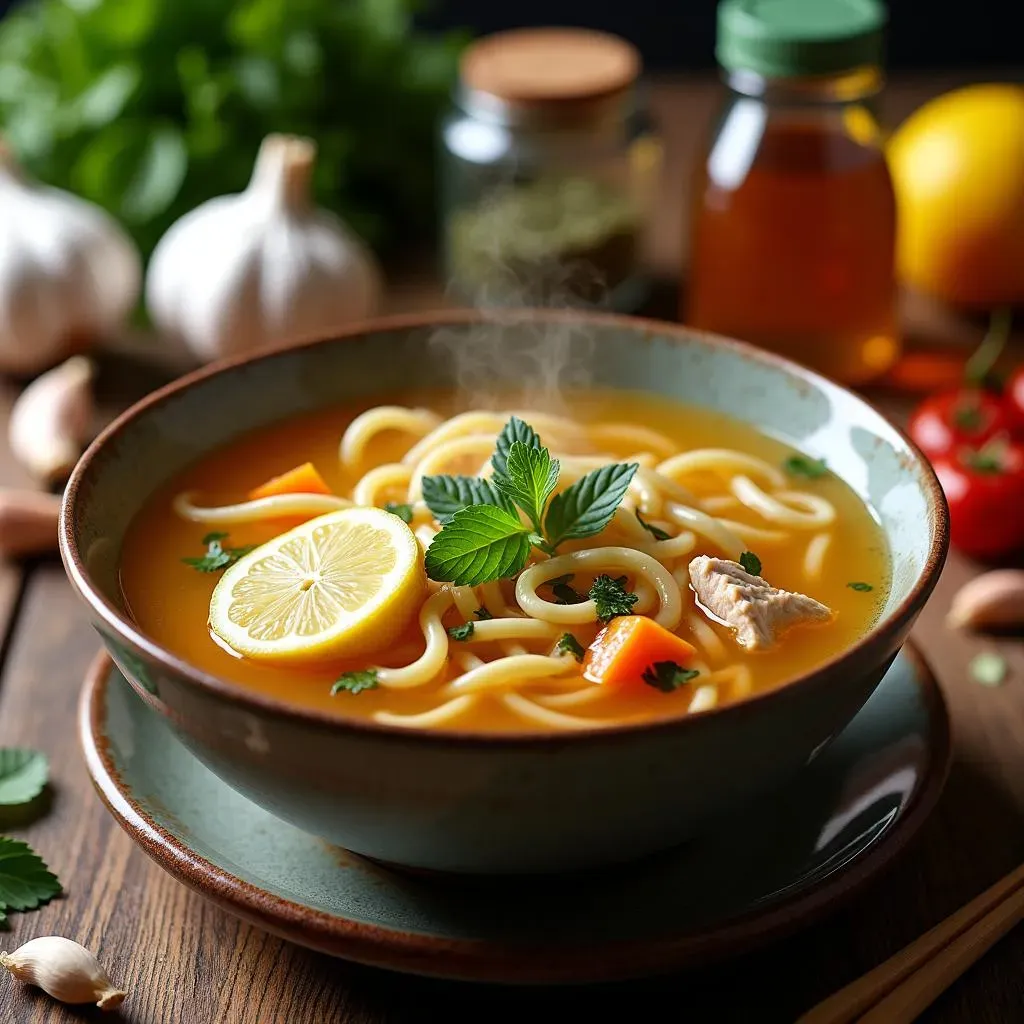
Tips & Tricks for the Best Tasting Low Sodium Chicken Noodle Soup
Don't Be Afraid of Acid
One of the biggest secrets to making low sodium food taste amazing is understanding the power of acid. A squeeze of lemon juice, a splash of apple cider vinegar, or even a dash of hot sauce can brighten the flavors and add a zing that salt would normally provide. Acid balances the richness of the broth and the other ingredients, preventing the soup from tasting flat or bland. Think of it as a flavor enhancer that works in harmony with the other components of the dish. It's like a little wake-up call for your taste buds!
Experiment with different types of acids to find your favorite. Lemon juice adds a bright, citrusy note, while apple cider vinegar provides a slightly tangy and complex flavor. A dash of balsamic vinegar can add a touch of sweetness and depth. Hot sauce not only adds heat but also a subtle tang that complements the other flavors. Add the acid towards the end of the cooking process, tasting and adjusting until you reach the perfect balance. Start with a small amount and add more to taste. You can always add more, but you can't take it away!
Salt Alternatives: Herbs, Spices, and More
When you're cutting back on sodium, it's time to get creative with your seasonings! Ditch the salt shaker and explore the wonderful world of herbs, spices, and other natural flavor enhancers. Garlic powder, onion powder, smoked paprika, and black pepper can all add depth and complexity to your chicken noodle soup. Experiment with different combinations to find your perfect blend. I personally love the combination of garlic powder, smoked paprika, and a pinch of cayenne pepper for a subtle kick. Nutritional yeast also is a great option.
Dried herbs are more concentrated than fresh herbs, so use them sparingly. A little goes a long way! Toasting spices before adding them to the soup can also enhance their flavor. Simply heat the spices in a dry skillet over medium heat for a minute or two, until they become fragrant. Be careful not to burn them! You can also create your own custom spice blends. Combine your favorite herbs and spices in a jar, and use it to season your soup. Get creative and have fun! The possibilities are endless.
Salt Alternative | Flavor Profile | Usage Tips |
|---|---|---|
Garlic Powder | Savory, pungent | Use sparingly, can be overpowering |
Onion Powder | Sweet, mild onion flavor | Good for adding depth |
Smoked Paprika | Smoky, slightly sweet | Adds a rich, complex flavor |
Black Pepper | Pungent, slightly spicy | Use freshly ground for best flavor |
Nutritional Yeast | Cheesy, nutty, umami | Use sparingly, can be overpowering |
The Importance of Homemade Broth
I know, I know, making your own broth can seem like a lot of work. But trust me, it's worth it! Homemade broth is infinitely more flavorful and complex than store-bought broth, and it allows you to control the sodium content. Plus, it's a great way to use up leftover chicken bones and vegetable scraps. Making your own broth is a labor of love, but it's a labor that pays off in spades.
If you don't have time to make broth from scratch, look for low-sodium or no-sodium-added broth in the store. However, be aware that even these options can still contain a significant amount of sodium. Always check the nutrition label carefully! You can also dilute store-bought broth with water to reduce the sodium content. Another trick is to add some extra vegetables and herbs to the broth to boost the flavor. The more flavor you add, the less you'll miss the salt!
Customize Your Chicken Noodle Soup Recipe: Low Sodium Variations
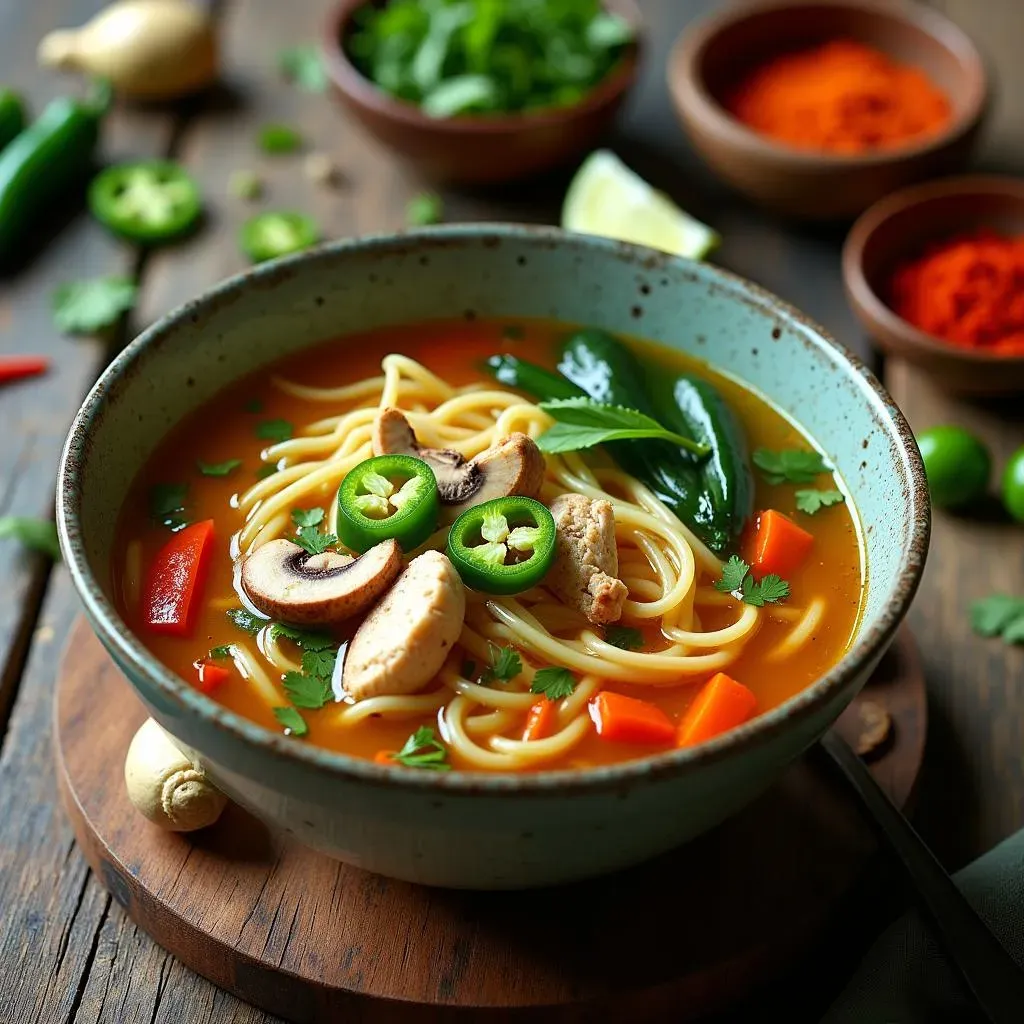
Customize Your Chicken Noodle Soup Recipe: Low Sodium Variations
Spicy Kick: Adding Heat Without the Sodium
Want to add some excitement to your low sodium chicken noodle soup? A little heat can go a long way in boosting the flavor without relying on salt. Think beyond just a sprinkle of red pepper flakes! Experiment with different chili peppers, like jalapeños, serranos, or even a touch of habanero (if you're feeling brave!). Remember to remove the seeds and membranes for less heat, or leave them in for a fiery kick. You can also add a dash of your favorite hot sauce, but be mindful of the sodium content. Look for low-sodium hot sauces or make your own!
Another great way to add heat is with ginger. Fresh ginger adds a warm, spicy note that complements the other flavors beautifully. Simply grate a small amount of fresh ginger into the soup as it simmers. You can also add a pinch of cayenne pepper for a subtle warmth. If you're looking for a more complex flavor, try adding some chili oil. Chili oil is made by infusing oil with chili peppers, and it adds both heat and flavor to the soup. Just be sure to use it sparingly, as it can be quite potent.
Global Flavors: Taking Your Soup Around the World
Chicken noodle soup is a blank canvas, ready for you to paint with flavors from around the world! Why not try a Thai-inspired version with coconut milk, ginger, lemongrass, and a squeeze of lime? Or a Mexican-inspired soup with black beans, corn, and a touch of cumin and chili powder? The possibilities are endless! Don't be afraid to experiment with different spices, herbs, and vegetables to create a soup that reflects your own unique taste.
For a Mediterranean twist, add some sun-dried tomatoes, olives, and feta cheese to your soup. Or try an Asian-inspired version with shiitake mushrooms, bok choy, and a splash of soy sauce (low-sodium, of course!). You can also add different types of protein, like tofu, shrimp, or even shredded pork. The key is to have fun and be creative! Let your imagination run wild, and see what delicious combinations you can come up with. You might just discover your new favorite soup!
Global Inspiration | Key Ingredients |
|---|---|
Thai | Coconut milk, ginger, lemongrass, lime |
Mexican | Black beans, corn, cumin, chili powder |
Mediterranean | Sun-dried tomatoes, olives, feta cheese |
Asian | Shiitake mushrooms, bok choy, low-sodium soy sauce |
The Last Sip: Enjoying Your Low Sodium Chicken Noodle Soup
So there you have it: a delicious and comforting chicken noodle soup recipe, low on sodium but high on flavor. Remember, creating a healthy and satisfying meal doesn't mean sacrificing taste. By focusing on fresh ingredients, clever techniques, and a willingness to experiment, you can enjoy all your favorite dishes without the sodium overload. This low sodium chicken noodle soup is a testament to that. Whether you stick to the classic recipe or venture into the variations, we hope this guide inspires you to get creative in the kitchen and slurp away, guilt-free. Now, go ladle yourself a bowl and savor the goodness!
